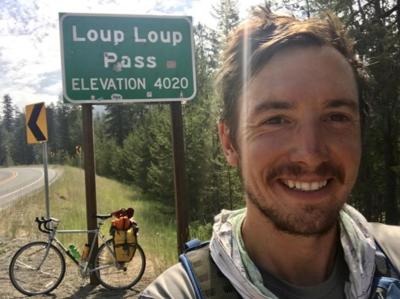Tubeless tires have been one of the most-ballyhooed developments in cycling during the past few years. I have not used any myself, but I can see the appeal for certain kinds of riding, particularly off-road: Tires ridden at low pressures are more prone to "pinch" flats than to punctures.
The debate over whether tubeless tires will displace their more traditional counterparts reminds me of the argument I heard when I first became a dedicated cyclist: tubulars vs. clinchers.
My first "serious" bike, a Peugeot PX-10, came with tubular tires. Their casings wrapped around the tube and were sewn together (hence the nickname, "sew-ups). They were then attached with a cement with the consistency of applesauce (until it dried) to a rim with a crescent-shaped surface.
The fully-enclosed tube made for a more buoyant (not for nothing do the French call these tires "pneus boyeaux") and lively ride. They also were lighter than any clinchers available at the time, which accentuated their performance advantage over "clinchers," the tires 99 percent of us ride.
 |
| Clincher (top) and tubular tire. |
 |
| Tubed (left) and tubeless clincher tires |
Getting a flat on any tire is not fun, but fixing one on a tubular is an ordeal. We usually carried a spare with us and, if we flatted, we changed the tire, letting the cement dry to about the consistency of bubble gum. Then we'd cross our fingers for the ride home. Professional racing teams are trailed by cars, which usually carried spare wheels with tires glued solidly onto them.
That is why, for my first tour-- which I did on the PX-10--I had a set of clincher wheels built. In those days, some riders toured (with loaded panniers!) on tubulars, but I was not going to do any such thing, especially when I ventured into the countryside of a foreign land. Those wheels--my first custom-built set--and tires, together, weighed about two kilograms (a pound and a quarter) more than the tubulars, even though they were among the lightest of their kind available. The tires were less prone to flats and much easier to fix.
Over time, companies like Michelin, Continental, Panaracer and IRC developed lighter clincher tires with improved durability, and Mavic created rims--the "E" series--that adapted the weight-to-strength ratio of tubular rims to clinchers and added a "hook" bead that made it possible to use high-pressure folding clincher tires. (Any rim made today with even a pretense of quality, in whatever diameter or width, is based on the “E” rims’ design.) Thus, the gap in speed and road feel between tubulars and clinchers narrowed to the point to the point that whatever benefits tubulars offered no longer offset their fragility, at least for most riders.
After my brief foray into racing, I kept one set of tubular wheels for fast rides. But, as I developed other ineterests (and relationships), I decided that I'd rather spend my time riding than fixing flats. Also, tire-making companies were offering fewer options in tubulars, or stopped offering them altogether. So, about twenty years ago, I rode tubulars for the last time. I'd own my last set of such wheels and tires, briefly, when I bought "Zebbie," my 1984 Mercian King of Mercia, just over a year ago. Hal Ruzal built me a nice set of clinchers (with classic Campagnolo hubs and Mavic Open Pro rims) and I sold the tubulars that came with "Zebbie" about a month after she came into my life.
I mention all of this to provide context for a story I came across yesterday. It seems that the tubular vs. clincher, and not the tubeless vs. tubed, question has once again reared its head.
For the 2021 racing season (assuming, of course, there is one), both of Specialized Bike's World Tour men's teams--Bora Hansgrohe and Deceuninck-Quick Step--have committed to abandoning tubulars for all races except the early-season classics. Both teams plan, eventually, to get away from sew-ups altogether.
 |
| Roval Rapide CLX wheel |
What might surprise some people, though, is that they are not casting their lot with tubeless tires. While both teams used tubeless, as well as tubular, wheels and wheelsets during the shortened 2020 season, their decision to go with clinchers might have been inspired by Julian Alaphilippe's Tour de France stage win on them. Also, Roval, the wheel-maker of choice for many in the peloton, is making two of its lightest road wheelsets for use only with tubed clincher tires. "When it's possible to create tubeless wheel/tyre systems that outperform tube-type clincher systems, that's what we'll recommend to riders," read a statement from the company that, for the past couple of years, looked ready to go all-in on tubeless clincher tires.
So, for the time being, some of today's young racers on high-tech carbon-fiber bikes have returned to the choice many of us made two or three decades ago: clincher tires. With inner tubes.




